Curtiss-Wright
CW-29
XA-43
CW-29A
XP-87 / XF-87
XP-87A / XF-87A, P-87A / F-87A
FP-87A / RF-87A
RF-87C
Blackhawk
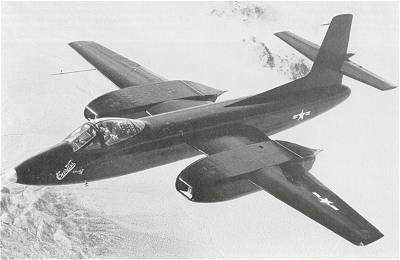
Curtiss XF-87 Blackhawk
Curtiss-WrightCW-29 XA-43CW-29A XP-87 / XF-87XP-87A / XF-87A, P-87A / F-87AFP-87A / RF-87ARF-87CBlackhawk |
 Curtiss XF-87 Blackhawk |
At the end of World War II, in an attempt to continue the success of aircraft like its P-40 series, Curtiss tried to remain competitive with several jet-powered aircraft. One of these was a mixed-power fighter for the U.S. Navy, the XF15C-1. Another project with potential was the XA-43 quad-jet attack aircraft for the U.S. Army Air Force. Two serial numbers (45-59600 and -596001) were assigned, but before the design could be put to metal, the Air Force issued a requirement for a night/all-weather jet fighter replacement for the Northrop P-61 Black Widow. Both Curtiss and the Air Force believed that the XA-43 design would be more suited to meet this requirement, and thus, on 21 November 1945, the first XA-43 was re-ordered as the XP-87 and its serial number given to this new aircraft. The XP-87 retained many of the XA-43's features. It was powered by four 3,000 lb thrust Westinghouse XJ34-WE-7 non-afterburning turbojets. The crew consisted of pilot and radar-intercept-officer side-by-side. Armament was to consist of four 20 mm cannon in a Martin-designed nose turret, which could revolve in a 60 degree arc about the nose and 90 degrees above or below the aircraft's centerline.
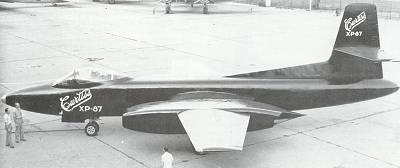
The first prototype was rolled-out at Curtiss' Colombus, Ohio, plant on 22 August 1947. Shortly thereafter it commenced various ground and taxi tests. During a high-speed taxi run, the nose gear collapsed. The resultant damage forced delays in the test program whilst repairs were effected. Once repaired, the aircraft was disassembled and trucked to Muroc, California, for flight tests. These were delayed by bad weather, but the XP-87 eventually took to the air on 5 March 1948 (or was it 1 March? - sources conflict), some five months before its competitor, the Northrop XP-89 Scorpion. During this interval, the Air Force became an independent branch of the armed forces, and took upon itself to issue a new aircraft designation system, in which aircraft in the former "P" for Pursuit series were re-designated as "F" for fighter. Consequently, the XP-87 became the XF-87.
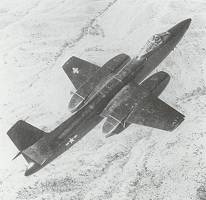
While the XF-87 was generally a satisfactory aircraft, it was rather underpowered, having a thrust/weight ratio of 0.3. With the advent of the more powerful General Electric J47, a revised version was planned. A prototype was proposed of a production version which would feature two 6,000 lb thrust J47-GE-7 turbojets, with possible future versions utilizing afterburning variants of this powerplant. The second prototype, designated XF-87A and assigned serial number 46-522, was never completed, as the (now) XF-89 Scorpion was declared the winner in a competitive fly-off, in which the U.S. Navy's Douglas XF3D-1 Skynight was also evaluated. Fifty-seven F-87A fighters and thirty RF-87A photo-recon variants had been ordered on 10 June 1948, but these were cancelled with the anouncement of the winner.
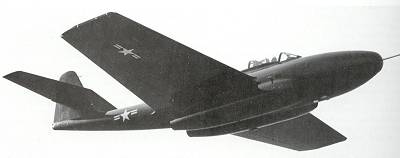
The cancellation of the F-87 closed the door on Curtiss' aircraft production. The Colombus plant reverted to government control and was later sold to North American Aviation, which obtained the rights to Curtiss' aircraft designs. The F-87 was the very last Curtiss fighter built in a long line of otherwise successful aircraft, dating back to the Hawk pursuits of the 1920's and '30's. The F-87 certainly would have had potential, had it had the J47 powerplant. Its service possibilities were numerous: its size would have allowed it to have been utilized as a reconnaissance platform, first photographic and later electronic, an electronic warfare platform, and possibly even its intended first role, that of ground attack, perhaps in an all-weather strike role. While the F-89 Scorpion was a fine aircraft, it did not quite have the growth potential that the F-87 had, and in fact was only used as an interceptor.
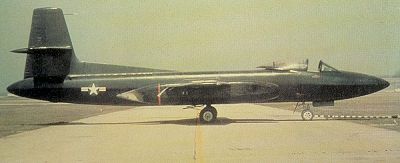
Timeline
| Specifications | XA-43 | XF-87 | XF-87A, F-87A, RF-87A |
| Designer(s) | ? | ? | ? |
| Mission Type | Attack | All-weather & night interceptor prototype | (F-87A) All-weather & night interceptor (RF-87A) Photographic reconnaissance |
| Powerplant | -- | 4 x 3,000 lb (1,360 kg) s.t. Westinghouse XJ34-WE-7 turbojets |
2 x 5,200 lb (2,359 kg) s.t. General Electric J47-GE-7 turbojets |
| Dimensions | |||
| Span | -- | 60 ft (18.29 m) | -- |
| Length | -- | 62 ft (18.90 m) | -- |
| Height | -- | 20 ft (6.09 m) | -- |
| Wing area | -- | 600.0 sq ft (55.74 m2) | -- |
| Weights | |||
| Empty | -- | 25,930 lb (11,762 kg) | -- |
| Loaded | -- | 37,350 lb (16,942 kg) | -- |
| Gross | -- | 40,000 lb (18,144 kg) | -- |
| Max | -- | 49,900 lb (22,635 kg) | -- |
| Performance | |||
| Max speed | -- | 580 mph @ sl (933 km/hr) | -- |
| Cruise speed | -- | 450 mph (724 km/hr) | -- |
| Initial climb rate | -- | 5,500 ft/min (27.94 m/s) | -- |
| Time to 35,000 ft (10,668 m) | -- | 13.8 min | -- |
| Service ceiling | -- | 41,000 ft (12,497 m) | -- |
| Range | -- | 1,000 miles (1,609 km) | -- |
| Max range | -- | 2,175 miles (3,500 km) | -- |
| Armament (not installed) | -- | -- | |
| Crew | -- | Two (side-by-side) | -- |
| User | -- | USA (USAAF / USAF) | -- |
| Number built | None | One | None |
| Construction Numbers | -- | ? | -- |
| Serial Numbers | 45-59600/596001 | 45-59600 (re-assigned from XA-43) | 46-522 (XF-87A) |
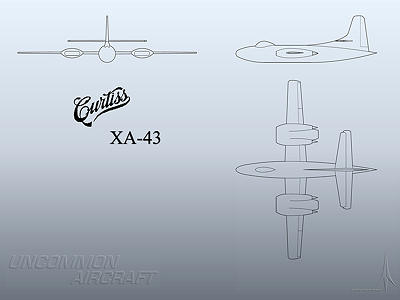 Curtiss-Wright XA-43 (Based on a drawing posted at Secret Projects) |
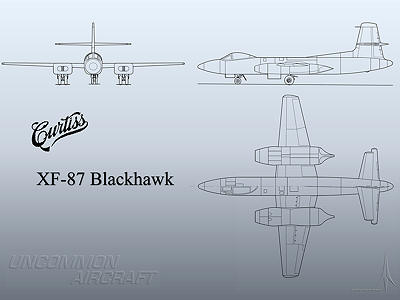 Curtiss-Wright XF-87 Blackhawk |
Profiles
Web Links
Sources
| [ | Home | | | About | | | Contact | | | Top | ] |
© 1997-2005, Robert Beechy
http://fire.prohosting.com/uncommon/aircraft/f-87/index.html
Originally posted January 1998
Modified: 01/05/2009